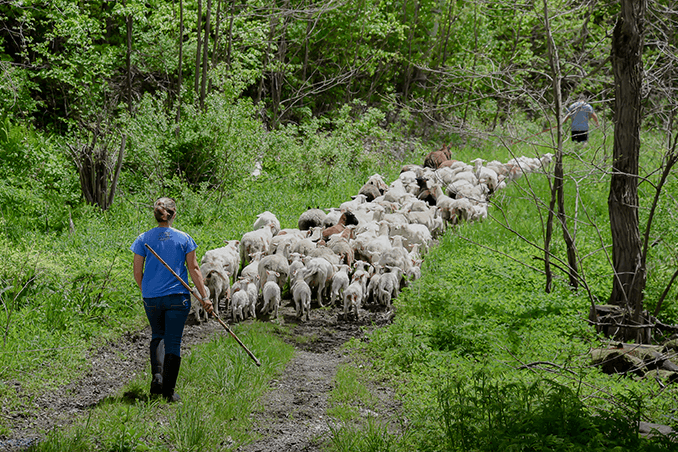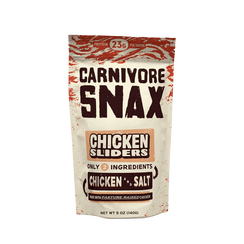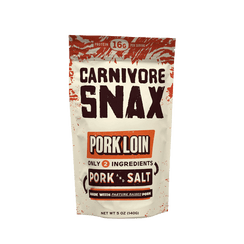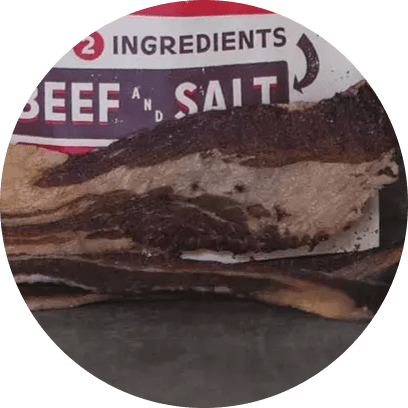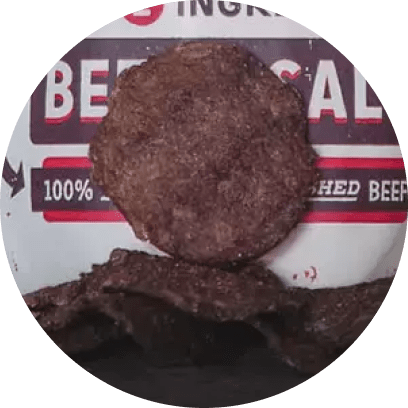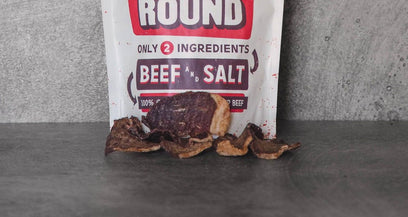THE CARNIVORE DIET BENEFITS




You may have heard that here at Carnivore Snax, we only source our meat chips through farms that rely upon regenerative agriculture practices. This is part of what sets our products apart from the alternatives on the market - along with the clean ingredients label and melt-in-your-mouth flavor profiles!
But what is regenerative agriculture, exactly?
To help you really understand the implications of regenerative farming we've decided to compile a full guide explaining everything you need to know. By the end of this article, you'll see why regenerative farming is the way of the future. And, you'll see why you should be strict about only buying from brands that take a similar stance as we do.
Let's get started with a regenerative agriculture definition.
What is Regenerative Agriculture in Simple Terms?
So, what is regenerative agriculture in simple terms?
In simple terms, regenerative agriculture is an approach to food production that is heavily focused on the environment and sustainability. It emphasizes the use of natural processes and biological cycles with minimal human intervention - to create a more sustainable ecosystem. These farms mimic the wild, making them carbon-sequestering and wonderfully humane for all their healthy animals.
This means that instead of using chemical fertilizers or pesticides, farmers will use composting, crop rotation, companion planting, minimizing soil erosion, and restoring biodiversity as their main methods of producing crops and livestock.
The Origins of Regenerative Agriculture Practices
The concepts behind regenerative farming have been around for centuries - it was even practiced in biblical times! However, many modern-day farming techniques have strayed away from what's considered "natural". In recent years, this has led to serious degradation of our planet's ecosystems and food sources, as well as health problems with livestock.
Since then, farmers have been striving to find ways to produce healthier foods in an environmentally friendly way. This is what has led to the recent revival of regenerative agriculture practices around the world. It's important that we understand what these principles are so that we can take steps toward a more sustainable future.
And to fully illustrate what regenerative agriculture looks like in practice, we're going to provide a few examples below:
What are Some Examples of Regenerative Agriculture in Practice?
Farmers will employ many different tactics in regenerative agriculture settings. There's no real "rulebook" in place for how a regenerative farm should operate. With that said, some of the common examples of regenerative agriculture in practice include but are not limited to:
- Composting: This is the practice of adding organic material to the soil in order to enrich it. This can be anything from kitchen scraps to fallen leaves, and helps improve soil quality over time by increasing the concentration of nutrients available for crops.
- Crop Rotation: To fight against pests and diseases, farmers will switch what crops are planted in what fields from year to year. This ensures that different types of plants get access to different nutrients, which ultimately leads to better yields overall.
- Rotational Grazing: In nature, herds of animals move across grasslands grazing what they can. This is oftentimes put into practice on regenerative farms - as it helps improve soil fertility and allows crops the opportunity to regrow naturally.
- No-Till Farming: This method involves using minimal machinery when planting crops, so as not to disturb any natural ecosystems or harm the soil with deep plowing activity.
- Cover Crops: Farmers often plant cover crops after harvesting a main crop in order to improve the fertility of the soil and keep it free from weeds.
- Restoring Biodiversity: Farmers are encouraged to plant multiple species on their land - even those that don't produce crops - as this helps restore biodiversity and make the land healthier overall.
These methods work together to create a more sustainable agricultural system that has less impact on the environment and produces healthier food for consumers. This is why we believe so strongly at Carnivore Snax, that regenerative farming is what should be adopted by farmers around the world if they want to minimize their negative footprint.
The Benefits of Regenerative Agriculture
Now that you know what regenerative agriculture is in simple terms, let's talk about what benefits it can bring to farmers and consumers alike. Why is regenerative agriculture important?
First of all, for the farmers themselves, regenerative agricultural practices have been found to improve soil quality, increase yields, reduce water use, decrease fertilizer costs, and minimize waste. This means that they are able to keep their farms financially sustainable while also producing healthier food in an environmentally friendly manner - something that is increasingly important today.
But, the benefits of this practice extend beyond the product and our earth. Farmers who implement this style of agriculture are happier and feel more fulfilled. And, these farmers are exposed to fewer harmful chemicals - like synthetic fertilizers & pesticides/herbicides.
For consumers, regenerative agriculture provides a better alternative when it comes to what we eat. By choosing meat snacks made with animals raised on regenerative farms, you can be sure that what you're consuming not only tastes great but also has a positive impact on our planet!
Speaking of which, let's take a look at the more broad implications of a world that relies solely on regenerative farming.
The Implications of a World Moving Entirely Towards Regenerative Agriculture
The idea of a world completely based on regenerative agricultural practices is quite exciting. Not only would this be beneficial for the environment, but it could also create more sustainable jobs and better food security in communities around the globe. It can even assist in restoring our lands.
It's important to note, however, that this shift would not happen overnight - it will take time and effort from both farmers and consumers alike in order to make this vision a reality. Moreover, there are certain challenges that need to be addressed in order for us to see these benefits come to fruition - such as access to training resources, or government subsidies for farmers who wish to adopt these practices.
Still, we believe that if enough people get behind this movement and work together towards the same goal, then we can achieve what many thought was impossible just a few decades ago - a world that is completely based on regenerative agricultural practices.
Support Regenerative Farming While Enjoying Delicious, Healthy Snacks at Carnivore Snax!
As you can see, the implications of regenerative farming are powerful - and this is a movement you should get behind. So - how can you support regenerative agriculture?
Use your voice to demand policy changes in local government that require farms to implement some of these tactics. Make it known that you want to do away with tactics that sacrifice personal and planetary health in favor of greater yield (profit). You can also do your part by growing some of your own food at home - using these practices, of course.
But beyond this - what can be done to make regenerative farming more commonplace? Support businesses that support this style of farming, of course!
At Carnivore Snax, we only source all-natural, grass-fed meat from regenerative farms right here in the US. Our farmers are as elite and ethical as you'll find in the nation. So, that means that when you purchase our delicious and healthy snacks, you're directly supporting farmers who are working hard to make a positive environmental impact.
But, there's more in it for you than simply feeling good about where you spend your money. Our meat chips are the best healthy low carb snacks you can get your hands on. Whether you're on carnivore diet or keto, or simply looking for a more nutritious snack to keep you going throughout the day - you can count on Carnivore Snax!
And, with so many different tantalizing flavors to choose from, you'll never get bored. We have ribeye chips, steak chips, lamb chips, beef chips, brisket chips, chicken chips, and even pork chips. The only hard part is choosing which of these you want to try first - grab them all and see which you like best!
What is Regenerative Farming? Wrapping Things Up
Regenerative agriculture is an exciting and sustainable farming practice that has been gaining traction in recent years. It includes methods such as composting, crop rotation, no-till farming, cover crops, and restoring biodiversity – all of which work together to create a healthier environment for both farmers and consumers alike.
The benefits of this approach are numerous and include improved soil quality, higher yields, reduced water usage, lower fertilizer costs, minimized waste, and better food security. Moreover, if enough people get behind this movement and work together towards the same goal, then we can achieve what many thought was impossible just a few decades ago - a world that is completely based on regenerative agricultural practices.
So what are you waiting for? Head over to Carnivore Snax and get your Carnivore Snax to support regenerative farming while enjoying delicious, healthy snacks! You won't be disappointed. Happy snacking!










